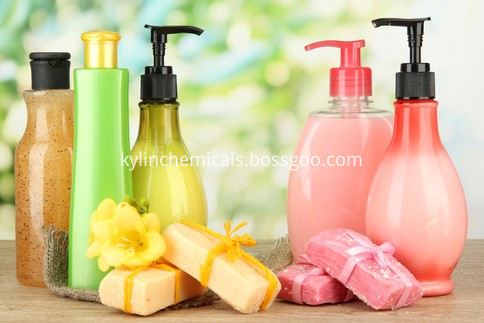In the process of agricultural production, it is often invaded by some germs, insects and weeds, which causes the production to decrease and the quality to deteriorate, resulting in reduced harvest and economic losses for farmers. Therefore, the following points should be noted when spraying pesticides to prevent diseases, insects and grasses in summer: 1. When spraying at noon high temperature and strong light, spray chemical pesticides when the temperature is high at noon and the light is strong. First, the drug is volatile, which is easy to cause poisoning to the pesticide. Second, most of the pests are hiding. In the cool and backlit place, the spray is not easy to hit the target, and the pesticide decomposes quickly, the volatilization loss is large, and the insect control effect is not ideal. Second, choose rain-free cloudy spray, if it is sunny, you should grab the spray at 8-10 am after sunrise or no dew after sunset at 5 pm, when the pest activity is booming. When the wind is large, the spraying should be stopped. Otherwise, the spraying will be uneven, and it will easily cause phytotoxicity. Third, when spraying pesticides in summer, attention should be paid to body protection, and pesticides should be avoided to contact with skin. Fourth, avoid increasing the concentration of liquid medicine at random, some farmers to improve work efficiency, or for enhancing the control effect, often increase the amount of pesticides, reduce the dilution factor of pesticides, and increase the concentration of liquids at will, even in the hot summer season. Due to the rapid evaporation of water at high temperatures in the hot sun, if the concentration of pesticides sprayed is too high, it is easy to cause medicinal damage to plant leaves. Fifth, the use of quick-acting pesticides, such as dichlorvos, chlorpyrifos, kelicin, octanoic acid emulsifiable concentrates such as pesticides, can kill pests 1-2 hours after use. Selecting pesticides with strong systemic properties, such as dimethoate, chlorpyrifos, and metalaxyl, 4 to 5 hours after use, more than 80% of the active ingredients can be absorbed into the internal tissues by the crop, even if it rains. Kill pests and germs. 6. Adhesives, water-based agents and wettable powders are added to water-based and wettable powder pesticides. When formulating pesticides, 100-150 g of soy flour or washing powder or two bags are added per 100 kg of liquid medicine. Jiamei Gold Point acts as a synergist to improve the use of pesticides. 7. Determine the safe interval of spraying according to the toxicity of pesticides. The residual period of high-toxic pesticides is more than 1 month, and the residual period of high-efficiency and low-toxic pesticides is 7-10 days. Regardless of food, oil, melon crops and fruit trees, the use of drugs should be stopped according to the regulations before harvest to prevent human and animal poisoning. Therefore, in the summer high temperature season application, it is necessary to pay attention to the amount of water, to ensure the dilution factor, the amount of liquid per acre must be more than 45 kg. Do not overfill the liquid in the barrel. Some farmers like to spray the liquid in the sprayer tank very full. This is not only unfavorable for spraying, but more importantly, if the lid of the sprayer is not tightly closed, the drug sprays on the body when the applicator walks in the field, and the person is easily poisoned during the hot season. The correct way is that the upper surface of the liquid in the barrel should be below the mark line when dispensing, and the closed loop of the lid must be intact to ensure that the lid is tightly closed. There are several common situations in which pesticides need to be mixed: Pesticide mixing is a common means of pesticide use. For the convenience and labor saving of farmers, several pesticides are often mixed together in the process of controlling pests and diseases. Not all pests and diseases need pesticides mixed. The following small series summarizes the need for pesticides. Several situations. 1. In order to achieve the purpose of disease prevention or enhance plant disease resistance, promote plant growth or cultivate strong seedlings; For example, auxin 2,4-D is mixed with a fungicide for controlling gray mold (proheximide, pyrimethanil, etc.) and then coated with tomato flower buds (or scented flowers); 2. When more than one disease occurs simultaneously on a crop, pesticides can be mixed; For example, in a cucumber cultivated in a protected area, whitefly or aphid and downy mildew, gray mold, etc. often occur at the same time, and the agent for controlling whitefly or aphid (imidacloprid) and the agent for controlling downy mildew (fine metalaxyl) are usually used. · Mancozeb) or a drug for controlling gray mold (isourea, nicotinamide, fludioxonil, etc.). Common pesticides on vegetables, such as trichlorfon, dichlorvos, fruit, broccoli, cyanidin, daisen zinc, thiophanate, thiram, carbendazim, chlorothalonil, treasote, B Phosphorus aluminum, captan, etc. can be mixed according to the needs of pest control. It is not effective to mix pesticides. The following points should be noted when mixing pesticides: 1. Mixed pesticides cannot be chemically changed; 2. Mixed pesticides cannot improve toxicity; 3. The physical properties of the mixed pesticides should remain unchanged; 4. Mixed pesticides should have different mechanisms of action or different control objects. Finally, Xiao Bian warm reminder: Pesticide should be used with caution, especially for some strong acid and alkali pesticides, so as not to reduce the efficacy and cause phytotoxicity. Therefore, it is necessary to look at the label in detail before using the pesticide, and to use it in a large area after a small area trial. More pesticide knowledge , please pay attention to China Pesticide Network
Kylin Chemicals manufactures and markets high quality chelants and sequestrants, including EDTA, Tetrasodium EDTA,EDTA Disodium salts, EDTA Tetrasodium salt, HEDP, PBTC, ATMP and DETPMP, etc.
Our sequestrants are widely used in variety of applications like detergents & cleaners, cosmetics, industrial water treatment, oilfield water treatment, textile dyeing, etc.
EDTA Chelants & Phosphonate Sequestrants Edta Chelation,Phosphonate Sequestrants,Ethylenediaminetetraacetic Acid,Phosphino Polycarboxylic Acid Kylin Chemicals Co., Ltd. , http://www.kylin-chemicals.com
